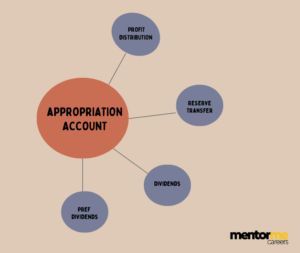Last updated on February 12th, 2024 at 01:00 pm
A journalized transaction is one that includes the date, the account you’re debiting or crediting from, and a brief explanation of the transaction that took place. Journalizing transactions is the process of maintaining a record of all your business transactions and tracking them in chronological order.
In the accounting cycle, journalizing transactions is the crucial initial step. The foundation of your financial records is the journal entries, so it’s critical to maintain them. You keep a journal of every business transaction you have, including client payments and purchases you make.
Here is all the data you need to know about accounting journalizing transactions:
What Does Accounting Journalizing Mean?
The method used in accounting is to journalize all business transactions for your financial records. A journal, also regarded as a Book of Original Entry, is where a business transaction is first documented. All of your business dealings are documented in your journal, which records them in the order that they occur.
Journalizing is the act of adding new entries to a journal. Journalizing begins each time a business transaction takes place.
Say your customer pays an invoice. To keep track of the transaction, you should journal that payment. Every entry in your journal should typically include the date, the account you’re debiting or crediting, and a brief explanation of the transaction you just made.
What Kinds of Journals Are There?
There are seven popular journal types, but as a freelancer or solopreneur, you’ll likely concentrate on one or more of the four described here.
Sales Journal: Keeps track of credit sales pertaining to your company. You should enter credit card payments made by customers into your sales journal.
Purchase Journal: Keeps track of any credit purchases you make for your company, such as software or desk supplies.
Cash Receipts Journal: A cash receipts journal keeps track of all the money coming into your company, including client payments made in cash.
Journal of Cash Payments: Keep track of all cash leaving your company. You would record it if you used cash to pay for parking on your way to a business meeting.
Your general ledger will eventually receive the transactions that were initially recorded in your journals. So what distinguishes a journal from a general ledger?
Consider journals as documents that detail every aspect of your company’s finances. On the other side, a general ledger is a master document that provides less information. Instead, it provides a comprehensive analysis of your finances.
Accounting Methods: Single versus Double Entry
The 2 main methods of accounting for small businesses are as follows. Single-entry accounting comes first. It is a major fundamental type of accounting. Each transaction is journalized as a single transaction in single-entry accounting. The single-entry method may be all you need if you’re a freelancer.
However, double-entry bookkeeping can pay off in the long run by making it simpler to prepare financial statements if you’re willing to put a little more effort into your bookkeeping.
According to double-entry bookkeeping, you are required to make an opposite entry in a different account for each journal entry you make in one account. Every credit to one account equals a debit to another, and vice versa.
The Basic Accounting Equation: What Is It?
The basis for double-entry bookkeeping is the basic accounting equation. The basic accounting formula is:
Assets = Liability + Owner’s Equity
Making sure the basic accounting equation is balanced is the goal of the double-entry accounting method.
The equation is unbalanced if the total of your debts ever differs from the total of your credits.
Transaction Journalizing: A Step-by-Step Guide
Journalizing is the process of using the double-entry accounting method to record business transactions and maintain an accounting record. The four steps for journalizing accounting transactions are as follows:
1. Sort business transactions according to account
Examine each business transaction and group it according to the type of transaction. Each transaction will involve two different types of accounts: one account that is debited and one account that is credited.
2. Identify the type of account involved.
When using double-entry bookkeeping, it’s crucial to identify the correct account type because there are various account types that can be included in a journal entry. Self-employed individuals typically use the asset, liability, expense, and revenue types of accounts.
3. Apply the fundamental accounting equation to the transaction
Keep in mind the key component of the fundamental accounting equation: your financial transactions must always be balanced, with the total of your debits and credits being equal. Therefore, you must make sure to credit the account that is debited whenever you do so.
4. Record the event in a journal
You must enter the business transaction as a journal entry in the appropriate journal to finish the process. Don’t forget to record the transaction’s date and a brief summary of the financial event you are documenting.
What Kinds of Accounting Transactions Are There?
There are many different kinds of accounting transactions for businesses, but fortunately for freelancers, there are only a few key kinds that you should become proficient in. As part of the journalizing process, you would record the accounting transactions listed below in your journal in the order that they occurred.
Here are a few typical accounting transaction types:
- Getting paid in cash in exchange for your services by a client
- Receiving money on credit from a customer for your services
- Obtaining a loan from a lender (i.e., getting a business loan from the bank)
- Investing in fixed assets for your company, such as a car, computer software, or an office building
- Recording a fixed asset’s deterioration over time (i.e., the value your work vehicle loses over time)
- Paying employees or contractors a salary
For the purpose of producing accurate financial statements, all of these accounting transactions would be journalized
Examples of Accounting Transactions in the Real World
Now that you understand what business transactions are and what journalizing transactions in accounting entail.
For a better understanding of journalizing, consider the following examples of accounting transactions.
- An increase in accounts receivable (asset) and an increase in revenue following from selling your freelance services to a client.
- A new work computer purchase results in higher expenses and lower accounts receivable (asset).
- When you borrow money from the bank, your cash (asset) increases, and your loans payable increase (liability).
Journal Date Column significance and explanations of the columns
Date column: The date of transaction is added in the first column, and rather than repeating it every day, the year is probably written at the top of the column.
Particulars Column: The accounting entry is written here in a condensed debit and credit format. The journal entry includes the names of the accounts involved in the transaction.
The word “Dr.” is written at the right end of the same line of the account that is debited on the first line.
After leaving a short amount of space at the beginning, the account credited is written on the second line with the prefix “To.”
A brief description of the transaction called the “narration” is written directly beneath the entry. The word “Being” opens the narration.
Ledger Folio No. Column (L.F.): This column contains the journal entry’s page number in the relevant Ledger. Future cross-referencing and cross-verification are made simple by doing this.
Debit Amount Column: The amounts that need to be debited from the accounts in question or involved are listed in the Debit Amount Column.
Credit Amount Column: Written in this column are the amounts that should be credited to the relevant or involved accounts.
Journalizing Transactions Rules: (Golden rules of Accountancy)
Personal Account: This refers to the people (natural or legal) that a business conducts business with.
Rule: Credit the giver and debit the recipient.
For instance, Komal was sold goods worth Rs. 5000. Here, it must be debited because Komal received the goods.
Real Account: This refers to goods or property that might enter or exit a business.
Rule: Debit what comes in, credit what leaves is the rule.
For instance, 7000 rupee goods sold for cash Cash flows out in this situation, so the cash account needs to be debited.
Nominal Account: It deals with the costs, losses, gains, and incomes of the company.
Rule: Credit all incomes, gains, or profits; debit all expenses or losses.
Additional Steps
- The account to be credited is on the second line, with the word "To" before the account name to be credited. Write a simple narration that begins with "Being" as well.
- Enter the final business transaction amounts in the debit and credit columns in relation to the completed deals.
- The amount column of every page should be added up if the journal entries are spread across multiple pages. The final line of that page should include the balance.
- The same sum is to be continued at the start of the following page as well.
- The totals are written as "Carried Forward" at the bottom of one page, and "Brought Forward" is used to start the totals of the corresponding columns on the following page.
- Additionally, journaling allows for the combination of transactions that are similar in nature and take place on the same date. The composite journal entry is the name of it.




